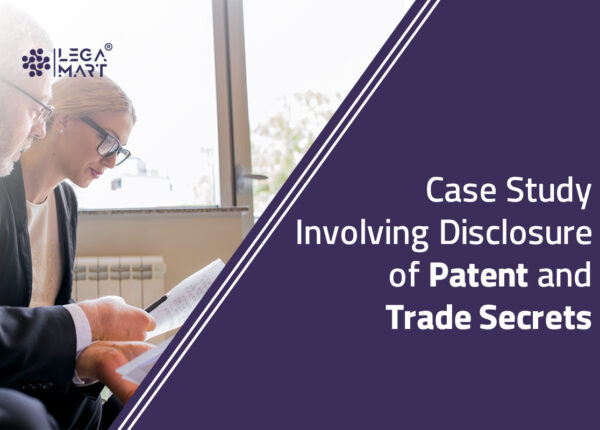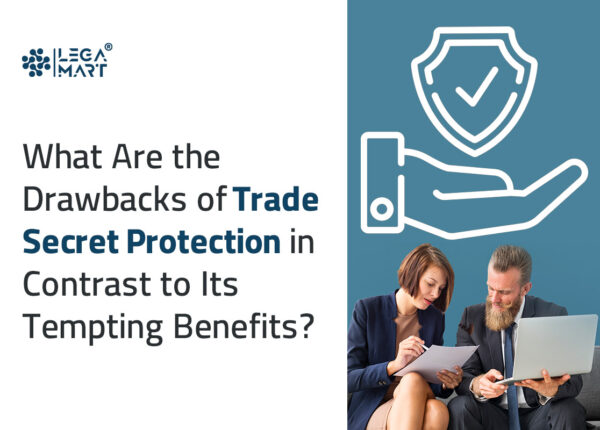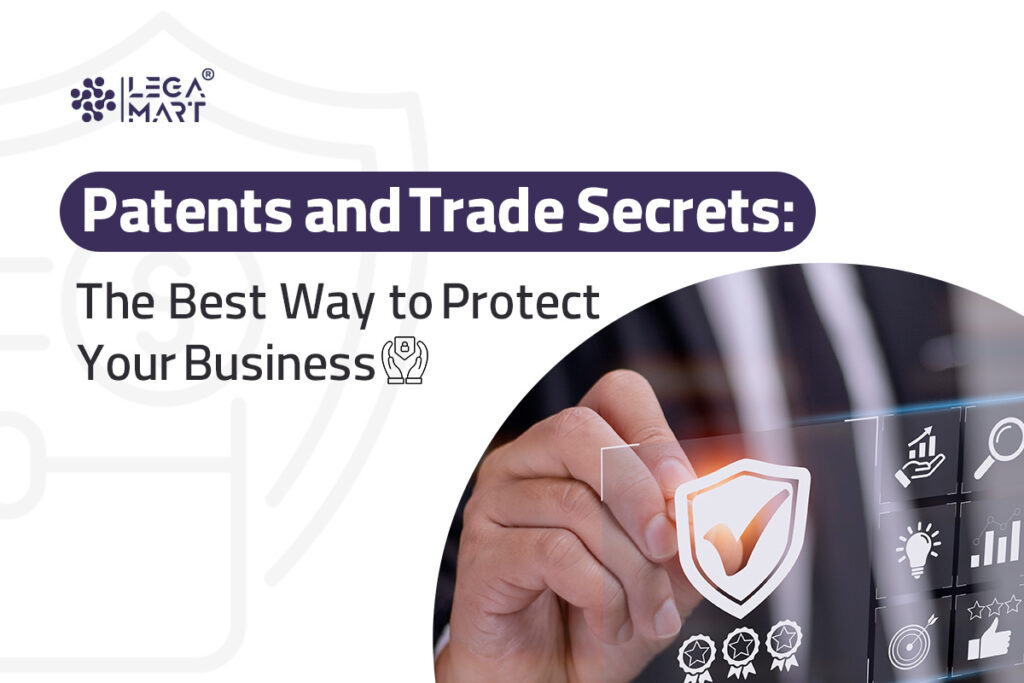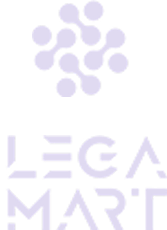- Introduction
- Case Study Involving Disclosure of Patent and Trade Secrets
- What Is Patent Protection Anyway?
- What Does It Mean to Obtain a Patent? What Rights Do You Exactly Gain by Obtaining It?
- What Are the Pros of Obtaining a Patent?
- What is a Trade Secret?
- What Kind of Secret Is a Trade Secret?
- How can Information Qualify for Trade Secret Protection?
- What Are Trade Secret Protection Advantages over Patent Protection?
- What Are the Drawbacks of Trade Secret Protection in Contrast to Its Tempting Benefits?
- What Is the Best Way to Protect Your Business?
- Patents and Trade Secrets FAQ
- Conclusion
Introduction
If you are an innovative person worried about your inventions or a company owner who needs to protect confidential business information, this article is written just for you. Patents and trade secrets are the most common types of intellectual property protection. At first glance, these terms look similar, but still, you should be aware that distinctive advantages and disadvantages reside in each of them, and choosing the method that fits your circumstances and goals is of great importance.
Consider the Coca-Cola case, for instance. This example vividly illustrates a crucial aspect of Legal Practice & Specialization: the strategic choice of intellectual property protection. If Coca-Cola had used patent protection for safeguarding its drink formula, it would have been protected only for a limited time and wouldn’t have been a secret anymore. Thus, the company definitely wouldn’t have been as wealthy and successful as it is now and would have lost its popularity only by choosing the wrong method of patent protection. So, that’s how important it is to choose a suitable method of IP protection. A wrong choice would turn a giant company into a big loss. Conversely, the right one can guarantee your business protection and make it a great success.
Case Study Involving Disclosure of Patent and Trade Secrets

Life Spine, Inc. v. Aegis Spine, Inc., No. 21-1649 (7th Cir. 2021)
Life Spine, Inc. v. Aegis Spine, Inc. is a case filed by Life Spine, a medical device company, against Aegis Spine, a competitor in the same industry, involving a spinal implant device called the ProLift Expandable Spacer System that is made and sold by Life Spine.
The two companies entered a distribution agreement where Aegis Spine was obligated to distribute the ProLift to hospitals and surgeons. As part of the agreement, Aegis Spines committed to safeguarding Life Spine’s confidential information, serving as a fiduciary for the company’s property, and refraining from reverse-engineering the ProLift. Despite its contractual obligations, Aegis Spine shared the details about the ProLift with its parent organization, intending to assist in developing a rival spinal implant device.
The parent organization later released a competing product to that effect. Upon discovering the same, Life Spine filed a lawsuit against Aegis Spine for breach of the distribution agreement and misappropriation of trade secrets.
In its defence, Aegis Spine argued that the trade secret concerning the precise measurements of a spinal implant device used to treat degenerative disc disease, which was subject to a patent and marketing, had already been disclosed. The district court issued a preliminary injunction prohibiting Aegis Spine and its associates from promoting the competing product.
Aegis Spine is currently disputing the injunction based on a flawed legal conclusion: a company can retain trade secret protection for a device it has already publicly disclosed via patents, marketing, and sales. The Seventh Circuit affirmed the district court’s decision and further determined that. In contrast, public-domain information cannot be considered a trade secret. A limited disclosure, on the other hand, does not terminate all trade secret protection.
The Seventh Circuit concluded that Life Spine did not publicly disclose the specific information it sought to safeguard by patenting, marketing, and selling the ProLift. Thus, Life Spine’s trade secrets were not in the public domain but available only to Aegis Spine, a party to the confidentiality agreements.
What Is Patent Protection Anyway?
Simply put, a patent is a legal document granting an exclusive right to the creator of a new product or a process for a limited time. For obtaining patent protection, certain registration formalities and payments are required depending on the jurisdiction from which you want to get the patent.
Additionally, to secure a patent, certain conditions must be satisfied, and while an exhaustive, universally applicable list is not possible, some key requirements include:
- Novelty: The invention must introduce a new element not found in the existing knowledge within its technical field, often referred to as “prior art.”
- Inventive Step: It should involve an inventive step, meaning it couldn’t be easily deduced by someone with ordinary skills in the relevant technical field.
- Industrial Application: The invention must be usable for an industrial or business purpose, not just a theoretical concept.
- Patentable Subject Matter: The subject matter must be eligible for patent protection. Certain things like scientific theories, artistic creations, mathematical methods, and more are typically not patentable in many countries.
What Does It Mean to Obtain a Patent? What Rights Do You Exactly Gain by Obtaining It?
The main value of a patent falls under the answer to this question. The patent holder can decide who may or may not use the patented invention. So when a patent protects an invention, it cannot be commercially made, used, offered for sale, sold, or imported by others without the patent owner’s permission. However, you should be aware that this exclusive right is not unconditional, and that’s why learning about the cons and pros of a patent is of great importance.
What Are the Pros and Cons of Obtaining a Patent?
Pros
- Protection from Copying: A patent provides you with the exclusive right to prevent others from copying, making, selling, or importing your invention without your permission. This safeguards your innovation from being used by competitors without your consent.
- Time-Limited Monopoly: You enjoy protection for a predetermined period, which allows you to maintain a competitive edge in the market. During this time, you have a monopoly on your invention.
- Utilization of Invention: You can make use of your invention yourself, enabling you to bring it to market and capitalize on its potential.
- Licensing and Revenue: Alternatively, you can license your patent to others, granting them the right to use it in exchange for royalties or fees. This can become a significant source of revenue for your business, and some companies specialize in collecting royalties from licensed patents.
Cons
- Public Disclosure: When you apply for a patent, you are required to disclose technical information about your invention, which becomes publicly available. Keeping your invention secret might be a more effective way to protect it in some cases.
- Time-Consuming Process: The process of obtaining a patent can be lengthy, typically taking three to four years. During this time, market conditions may change, or technology advancements could outpace your invention.
- Financial Costs: Applying for a patent involves costs, whether your application is successful or not. These expenses include application fees, searches for existing patents, and fees for patent attorneys. The potential for profit should outweigh these financial investments, but not all patents hold significant financial value.
Registration formalities and fees
To obtain patent protection, you must go through a rather complex patent registration process and pay the required fees, which vary from country to country. So, you need to seek legal advice regarding the law of the related country before going through this procedure.
Time limitation
Patents are granted for a limited period, which varies in different countries. After the expiry of this period, your invention will fall under the public domain. That is to say, everyone can exploit it, and your permission won’t be a requirement anymore.
Territory limitation
Patent rights are only enforceable in the territory of the country or countries that have granted the patent to you. So, at least in the current state of the international patent system, there’s no such thing as a worldwide patent. The more countries give you the patent, the more protected your invention will be. This highly recommended protection surely necessitates legal experts from different jurisdictions.
Risk of disclosure
Note that patent rights are granted in return for the inventor’s full disclosure of the invention to the public. Indeed, no matter how public the information is, while you have a patent, you’re protected. But the risk of tricky infringement still exists.
For example, if you create an improved perfume-spreading device to spread the perfume to a certain distance, someone else may do the same, only with spreading power at close distances. So competitors can easily make this device with slight differences that don’t violate your rights but appeal to the same buyers.
Thus, if a new process is so vital and confidential that you never want your competitors to discover it, you may need another type of protection, which will be the next section, trade secret.
What is a Trade Secret?
A trade secret is confidential information used in business and gives a company a competitive advantage. This information can be any knowledge, process, formula, design, pattern, technique, or other information that is not generally known to the public but is kept secret by the company for its competitive advantage.
How can English law safeguard trade secrets?
Under English law, trade secrets can be protected through two main avenues:
- Common law action for breach of confidence is based on the principle that someone can’t unfairly use confidential information or harm the person sharing it.
- Breach of contract action, especially when a Non-Disclosure Agreement (NDA) is in place or can be implied.
Unlike patents, trade secrets do not require registration as they are protected without formal procedures; therefore, to qualify for protection, certain elements must be present, including the information’s confidentiality, an obligation of confidence (contractual or implied), and unauthorized use of the information.
What Kind of Secret Is a Trade Secret?
Suppose you are a company that provides products or services with unique features. To guarantee your income and protect your particular product or service from your competitors, you’d better keep the feature that makes your work exceptional a secret. No matter if it’s a new formula or a special recipe.
You’ve probably heard of many popular examples of trade secrets, such as McDonald’s Big Mac “special sauce,” Google’s search algorithm, and the most common one, Coca-Cola’s recipe for their signature drink.
So basically, the types of work you protect with trade secrets are secrets. These might not be patentable but are nonetheless commercially valuable.
How can Information Qualify for Trade Secret Protection?
For information to qualify for trade secret protection, it must meet the following criteria:
- It must be secret or confidential: The information cannot be generally known or readily available to the public.
- It must have commercial value: The information must have actual or potential commercial value because it is not generally known to others in the industry.
- It must have been subject to reasonable efforts to maintain its secrecy: The owner of the information must have taken reasonable steps to keep the information confidential, such as implementing security measures, confidentiality agreements, and limiting access to the information.
What Are Trade Secret Protection Advantages over Patent Protection?

No registration and payment
Unlike patents, trade secret protection needs no registration and, as one might expect, no payments. Thus, there’s no complex process to acquire trade secret protection. You don’t have to do anything to get a trade secret except to do the things that make a trade secret a trade secret. You must have a secret that you try to keep secret by, for example, forcing people to sign non-disclosure agreements, training your employees not to disclose the secrets, or even keeping them in safes.
No time and territory limitation
Trade secret protection is not limited to any period. So the information can be a secret as long as you want it to be. Besides, since you don’t receive this protection from a specific jurisdiction, your secret is not limited to a certain place but is everywhere.
No risk of disclosure
Since you don’t have to disclose your invention to the public for the competent authority to give you trade secret protection- for it’s not obtainable from authorities. Hence, there’s no risk of disclosure to the public. As long as you keep your invention a secret by the means mentioned above, your confidential information will be safe.
What Are the Drawbacks of Trade Secret Protection in Contrast to Its Tempting Benefits?

You are responsible for maintaining the trade secrets
As set forth above, trade secret protection involves taking necessary steps to maintain this valuable confidential information, such as non-disclosure agreements or simply keeping them in safes. Making any mistake in this regard would directly hurt your business because once the secrecy is gone, you have no legal actions to take.
Trade secret protection is not necessarily suitable for any subject matter
The difficulty of trade secret protection is that if your information concerns a specific method of building a device or any object when putting it on the market, it would be susceptible to independent discovery and potentially reverse engineering. And when the information is unravelled, there’s nothing to do because you’re responsible for maintaining it.
Conversely, if you protect this product under a patent, no matter how public the information will be, as long as you hold the patent, you can take legal actions against any form of exploitation which lacks your consent.
So you’d better use the trade secret protection mostly for process inventions.
When patents are preferable to trade secrets
When it comes to choosing between patents and trade secrets for protecting your innovations, there are some important factors to consider, such as;
Patents offer strong protection but come with a time limit of around 20 years. However, during that time, no one else can legally use your patented invention. On the other hand, trade secrets only protect against unlawful breaches. They don’t stop others from figuring out your secret through legitimate means like reverse engineering, particularly if someone can take apart a product and figure out how it works legally, then trade secret protection fails to be effective. Coca-Cola, for example, chose trade secret protection for its formula because it was hard to reverse engineer. This has kept their formula a secret for over 100 years.
If you designate something as a trade secret, it does not stop others from developing their version independently. They could even patent it and claim exclusive rights, leaving you with no protection.
Lastly, you have to be extremely careful with trade secrets. If they accidentally get out, your protection is gone. If people with access to the secret spill the secret information, it becomes public knowledge and loses its protection. So, staying vigilant and enforcing non-disclosure agreements is crucial.
What Is the Best Way to Protect Your Business?
Now it’s time to sum up and find out which one of these types of protection works the best for you. The answer to this question would differ depending on who you are, your aim of protection, and what item you want to protect.
So be careful that there’s no absolute answer. While deciding which protection to choose, you must consider all relevant circumstances, including your financial sources, how much time you have for being protected, your subject matter of protection, and, more importantly, your vision for the future of your business. In addition, the method of protection taken by others may not necessarily be suitable for you.
Last but not least, be sure to consult with a business lawyer before selecting a method. That’s an essential requirement since patent laws may vary from one country to another.
Besides, you need to apply in each country that you want your invention to be protected since there’s no such thing as a worldwide patent in the current state of the international patent system. So, the more countries that give you a patent, the more protected your invention will be.
Share your goals and circumstances with business lawyers, and they’ll guide you per the law of any desired country of yours.
Conclusion
Patents and trade secrets are two key ways to protect your business’s intellectual property and gain a competitive advantage. On one hand, a patent can be best suited for protecting an invention or a unique product that is difficult to replicate. On the other hand, a trade secret is best for protecting confidential information that gives a business a competitive edge, for example, manufacturing processes.
Furthermore, a patent requires public disclosure, while a trade secret requires confidentiality. Thus, a business must take measures to keep its trade secrets secret. This can be done by utilizing factors such as non-disclosure agreements, restricted access to information, and employee training, all important tools for protecting trade secrets.
Ultimately, choosing between a patent and a trade secret will depend on the type of information to protect and the business goals, as well as having a clear insight into the benefits and drawbacks of each.
Frequently asked questions
What is the distinction between a trade secret and a patent?
A trade secret is confidential information that is not widely known or easily accessible, and it has value because of its secrecy. In contrast, a patent is a government-granted exclusive right for an invention or discovery obtained by disclosing the invention’s details to the public. The key difference is that a trade secret relies on confidentiality, while a patent depends on public disclosure in exchange for legal protection.
Can I get a patent while keeping my invention a secret?
No. Patents are granted by patent offices in exchange for full disclosure of the invention. Generally, the details of the invention are published and made available to the public. This publication can occur at various stages, depending on the country’s patent procedures. Some countries only publish the patent document after the patent is granted, while in others, patent applications are typically published 18 months from the filing date or the priority date if claimed.
Can multiple parties have rights to the same trade secret?
Yes, multiple individuals or entities can claim rights to the same trade secret if both independently developed the technology and took reasonable steps to keep it secret. This applies as long as the technology isn’t widely known.
What’s the international legal framework for trade secret protection?
The international legal framework for trade secret protection is primarily defined in the Paris Convention’s Article 10bis, which obligates member states to provide effective protection against unfair competition. However, the convention doesn’t define trade secrets beyond the general protection against dishonest commercial practices.
Additional standards for trade secret law can be found in Article 39 of the Agreement on Trade-Related Aspects of Intellectual Property Rights (TRIPS Agreement). These standards provide some consistency in trade secret protection across different countries, although specific laws may vary from one nation to another.
LegaMart is a global legal platform designed to connect individuals, startups, and businesses with qualified lawyers across jurisdictions. With a mission to simplify cross-border legal services, LegaMart provides users with access to a diverse network of vetted legal professionals who specialize in areas such as international law, corporate law, immigration, dispute resolution, and more.
By leveraging technology and user-friendly tools, LegaMart allows clients to search for lawyers by country, language, or legal expertise, submit their legal queries, and receive tailored legal solutions in a streamlined, efficient manner. The platform serves as a bridge between legal professionals and clients who need multilingual, multi-jurisdictional support — especially in today’s increasingly globalized legal landscape.
Whether you’re an entrepreneur launching a business abroad, an individual dealing with immigration paperwork, or a company navigating cross-border compliance, LegaMart aims to make legal help more accessible, transparent, and collaborative.




